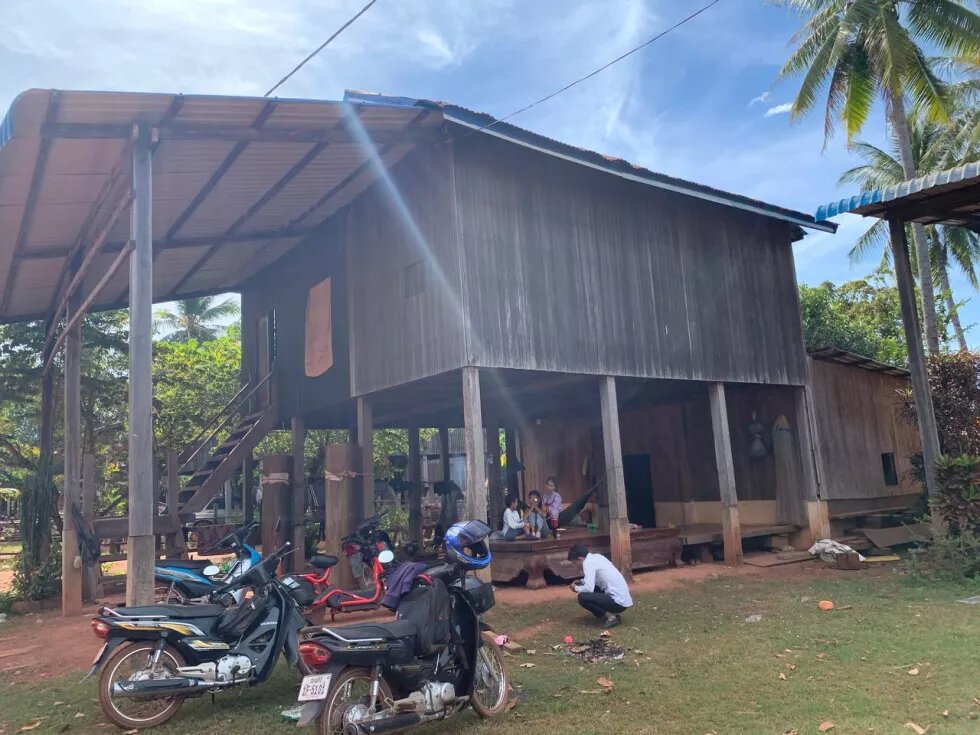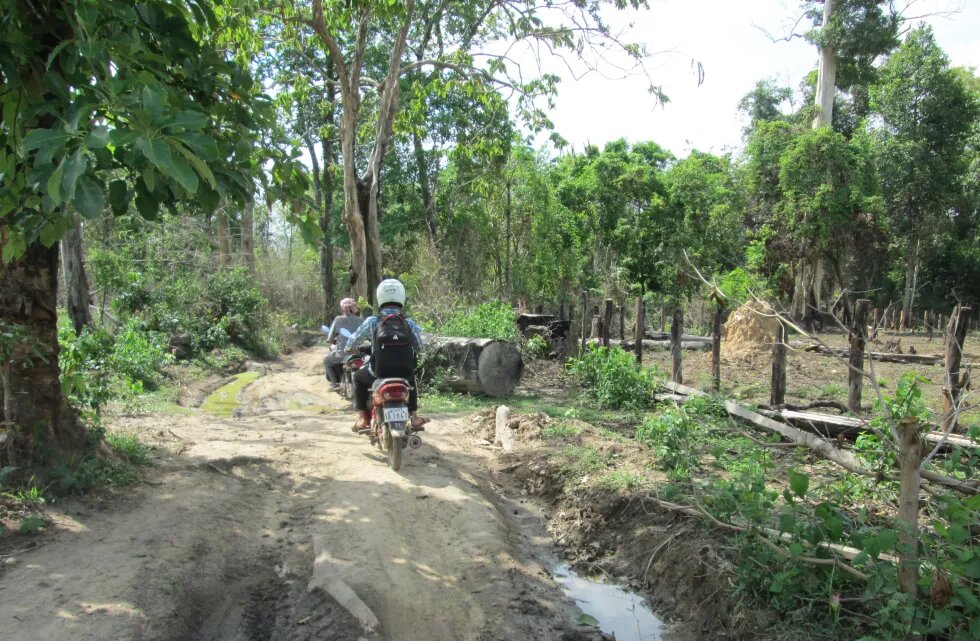
Microfinance credits are a highly competitive business in Cambodia, expanding their operations among ethnic communities, including the indigenous Brao villages in Ratanakiri province in the northeast region. But ethnic people are now getting heavily indebted and losing their livelihood resources, accelerating land loss and dividing the community.

Chanti, a 50-year-old Brao woman, sold her last piece of land six years ago to her debtors. She was born in Kamplenh village, Labang Mouy commune, Ratanakiri province, where she has lived with her family her entire life. She borrowed money using her land as collateral. The two hectares of land she received from her parents and the three hectares she used with her husband 20 years ago have now been lost to debtors. Her livelihood directly depends on casual labor in the nearby banana plantations or cassava farms.
Chanti’s life changed when she started borrowing money from a microfinance company in 2013. At first, she borrowed US$1,500 from the microfinance company A for the wedding ceremony of her son. She used some of her rice fields as collateral but failed to repay the principal. After four years of struggling to pay interest on the loan, she took additional loans from two more microfinance institutions, B Bank and L Company, to repay the principal and her family’s living expenses. In 2020, again, using her residential land as collateral, she borrowed US$1,050 from C Microfinance PLC but this time with a very high-interest rate. She had no alternative but to get a high-interest loan as other companies refused to give her a loan due to her insolvency. Now she is deeply burdened by debt, a distressing situation she shares with many ethnic communities in the province.
Getting into debt
Microfinance or loan companies started operations in Cambodia during the 1990s as part of efforts of the Royal Government of Cambodia to provide farmers with access to easy credit for rural development. Microfinance companies entered the ethnic Brao community in Labang Mouy commune in the early 2000s. The head of the Katieng village in Labang Mouy commune recalled his first encounter with the microfinance officers: “The microfinance officers first visited the Commune Councils to get permission for their promotional activities in the three villages of Labang Mouy commune. Then they asked me to promote their loan operations to the village people.”
Plai, a 36-year-old woman in Katieng village, remembers that the microfinance officers visited each household separately and explained to the families how to borrow of money.
“They recommended we use their loans to expand our farms and rice fields. Most visited us right before the cultivation season as they knew we need more money at that time to buy fertilizers,” she said.
Many village people said initially microfinance seemed like a good thing that could improve their livelihood. But as borrowing money began to gain in popularity, the communities started spending money on purchasing consumer and electronic devices using their loans. As time passed, more and more loans were used not for cultivation but to buy motorbikes and cell phones or to spend on recreational purposes like rituals and village events.
However, soon many families realized that paying back the microfinance loans became a considerable challenge since most families relied on subsistence livelihoods and did not have a lot of cash inflow from selling their crops or farm produce. Another common reason for severe indebtedness was that farm yields are often unstable, mainly due to uncertain weather conditions, with prices of agricultural products fluctuating many times during the year.
For example, cashew crop yields fell unexpectedly low last year due to heavy rains, and many people could not get a reasonable price. Also, households can encounter unexpected problems, such as the sudden illness of household members requiring expensive visits to the hospital. Ethnic Brao people also tend to spend money on rituals; for example, Katieng village has a tradition called Arak held at least three times each year that requires the sacrifice of buffalos or cows, with one buffalo costing as much as US$400.
Competition for credit
Microfinance credit operations have become highly competitive, targeting vulnerable people who lack any knowledge of finance, interest, and loan payments. A microfinance officer working for P Microfinance has aggressively promoted loans from his company among indigenous families.
“It is easier to persuade those people who are already indebted to borrow more from us. People under pressure from interest and principal repayments are easily convinced when I tell them I can lend them money from my company so that they can pay back their existing debts,” he told this author.
Once families get into debt, with no chance of repaying their principal while interest payments keep mounting, they are forced to sell their homes and farmlands and move out of their indigenous Brao villages.
Kleam Sovann, head of the Labang Mouy commune, said: Over the past decade in Kalong village, more than 90 percent of the community has sold their lands to repay their debts. I think loans have affected people’s livelihood decisions in many ways. Many used their lands as collateral for loans, but once they lost their lands, they did not know how to make a livelihood other than farming. They try to buy cheaper land farther away from the village. Some finally decide to leave the community as their new farms are too far away to keep traveling back and forth from the village.”
Although the microfinance operations promised to develop indigenous villages by providing farmers access to cash, it is a massive challenge for most indigenous Brao people in Labang Mouy commune to repay their loans.
Most still need to rely on traditional farming activities that do not guarantee high productivity and stable income. The Labang Mouy commune’s story suggests that this trend of indigenous communities losing their lands and moving to find work or cheaper land to resettle is expected to accelerate. Enhancing indigenous people’s financial literacy could be one of the solutions to ensure they are aware of the debt burden and loan repayments so they can borrow within realistic limits depending on their livelihoods and farm incomes. Many people have now got used to accessing easy cash from loans before they fully understood how to use credit and what the concepts such as interest, principal, and debt mean. The government, local authorities, civil society, and microfinance institutions must take action before the indigenous communities lose all their lands to debtors.
The names of the microfinance companies and their staff interviewed for this article are withheld for safety reasons.
__
This article first published by Mekong Commons on 19 April 2023, as part of the output of "Mekong Commons Online Writeshop" supported by Heinrich-Böll-Stiftung Southeast Asia regional office.
Ngel Kampel is an Indigenous Brao born and raised in Katieng village and majored in economic development studies. He has worked for indigenous community development in his hometown in Ratanakiri province, northeast Cambodia.
The names of the microfinance companies and their staff interviewed for this article are withheld for safety reasons.
The views expressed in this article are not necessarily those of Heinrich Böll Stiftung.

